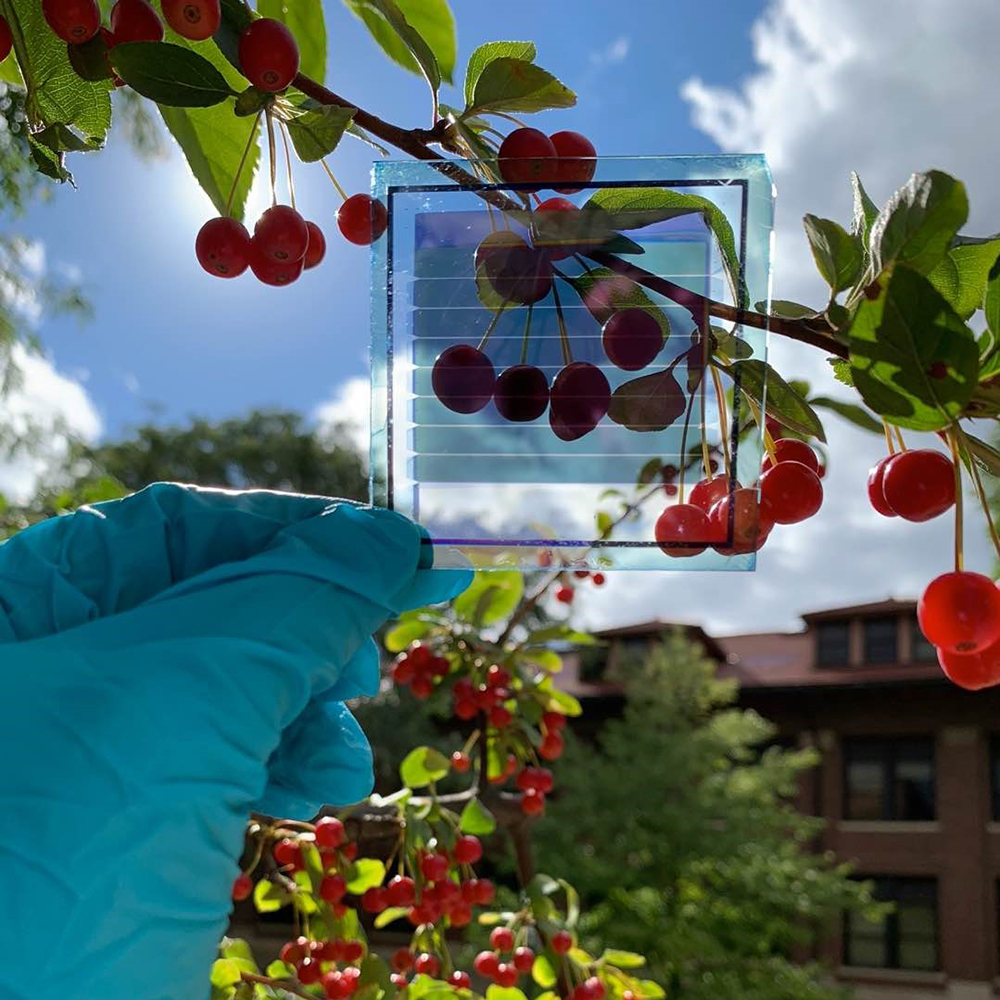Organic photovoltaics offer realistic pathway to power-generating windows

Instead of installing opaque solar panels to roofs, semi-transparent solar cells could one day turn any window into a solar-powered generator, providing a home with abundant clean energy.
Researchers at the University of Michigan have previously shown that organic photovoltaics can achieve this transparency while being highly-efficient and long-lasting. Now, in new research published in Proceedings of the National Academies of Sciences (PNAS), they identified and solved an issue in the fabrication process that limited the reliability of organic solar cells. This result, along with their previous work, brings them a step closer to manufacturing and testing power-generating windows at scale.
“The goal of much of our recent research on organic solar cells has been on understanding their stability during operation,” said Stephen Forrest, the Peter A. Franken Distinguished University Professor of Electrical Engineering and Paul G. Goebel Professor of Engineering. “We have found molecular designs that are more stable that will allow us to make highly durable, ultra-high efficiency, thin film, inexpensive, and flexible organic photovoltaics.”
We have found molecular designs that are more stable that will allow us to make highly durable, ultra-high efficiency, thin film, inexpensive, and flexible organic photovoltaics.
Prof. Stephen Forrest
Traditional silicon-based solar cells are efficient and long-lasting, but they absorb the entire spectrum of light, meaning they’re always opaque. Organic solar cells can absorb photons from different wavelengths of light while letting visible light pass through, making them suitable for windows. These energy-generating films can be applied directly to current window panes, and they can also be made with different colors, creating a stained-glass appearance.
“Buildings that can power themselves with clean energy would be a major improvement for sustainability,” said ECE Assistant Research Scientist Yongxi Li, the first author on the paper. “Another advantage of our transparent solar cells is they can reflect heat, meaning buildings will be cooler in the summer, and we don’t have to expend as much energy on air conditioning.”
Buildings that can power themselves with clean energy would be a major improvement for sustainability.
Yongxi Li, ECE Assistant Research Scientist
In their previous research, the team achieved record efficiencies of 10% along with 50% transparency, and estimated lifetimes of up to 30 years for organic solar cells. They did this by solving issues related to the stability of materials interfaces within the cells.
For this research, they focused on ternary organic solar cells, which are a type of solar cell that can achieve efficiencies of up to 20%. However, the team discovered a significant weakness in the molecules used in ternary organic solar cells, which severely limits their lifespan. Specifically, they found that the materials interact with each other during their blending and deposition process, and this produces new molecules that greatly decrease the usable life of the solar cell. Exposure to even extremely miniscule traces of water during the fabrication process, in particular, damaged the entire device.
The team succeeded with two different solutions to the problem. They developed a new fabrication method that eliminates water from the process. They also created new molecular design strategies that avoid the problem — known as an “end-capping exchange reaction” — altogether.
“This means we can get even longer-lasting, reliable, transparent solar panels with high efficiency,” Li said. “We’ll then be able to fabricate modules for large-scale, transparent solar window panels.”
This means we can get even longer-lasting, reliable, transparent solar panels with high efficiency.
Yongxi Li, ECE Assistant Research Scientist
The work was done in collaboration with Prof. Mark Thompson’s group at the University of Southern California, Prof. Aram Amassian’s group at North Carolina State University, and Prof. Larry Liao’s group at Soochow University. Fabrication work was accomplished in the Lurie Nanofabrication Facility.
The research was supported primarily by the U.S. Department of Energy and the Department of the Navy, Office of Naval Research (ONR). Additional support was provided by Universal Display Corporation. Forrest and U-M have a financial interest in Universal Display Corp.

 MENU
MENU 
